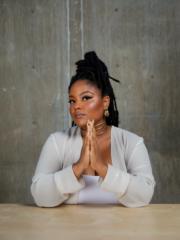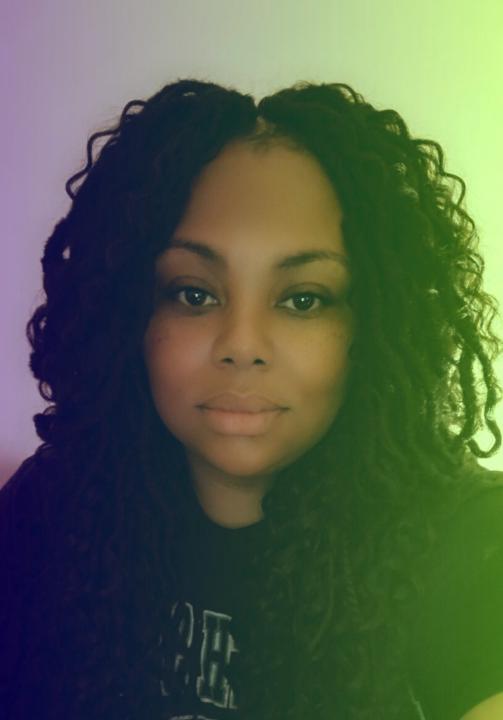Activity
Mon
Wed
Fri
Sun
Jan
Feb
Mar
Apr
May
Jun
Jul
Aug
Sep
Oct
Nov
Dec
What is this?
Less
More
Memberships
Contemporary Art
80 members • Free
3 contributions to Contemporary Art
⏰ Class 2 Now Posted! (Write Discussion Notes Below)
Write your discussion notes below from "AFRICOBRA – The Art of Black Power and Cultural Revolution ." If you are having trouble opening it, view the screenshot below with instructions. QUESTIONS: In 1967, Jeff Donaldson, a pivotal figure in the Black Arts Movement and co-founder of AFRICOBRA, posed a series of thought-provoking questions to fellow artists. These questions were designed to challenge and inspire artists to reflect on their roles and the impact of their work within the Black community. 1. The Role of the Artist in Society: What responsibilities do Black artists have in representing and uplifting their communities? 2. Defining a Black Aesthetic: How can artists develop a distinct aesthetic that authentically reflects Black culture and experiences? 3. Art as a Tool for Social Change: In what ways can art be utilized to address and combat social injustices faced by the Black community? 4. Community Engagement: How can artists actively involve and engage the Black community in the creation and appreciation of art? 5. Cultural Preservation: What role does art play in preserving and celebrating African heritage and traditions within the diaspora? 6. Economic Empowerment: How can Black artists create sustainable economic opportunities for themselves and their communities through their work? 7. Collaborative Efforts: In what ways can artists collaborate to strengthen the collective impact of Black art movements? 8. Challenging Stereotypes: How can art be used to dismantle harmful stereotypes and reshape the narrative surrounding Black identities?
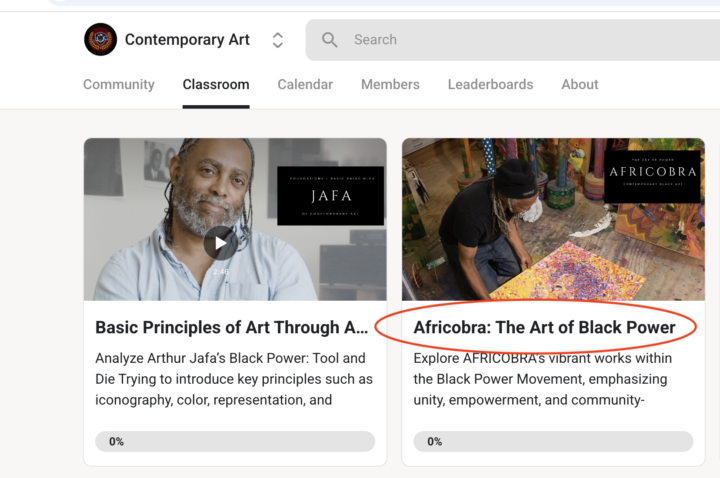
0 likes • Feb 8
I've had the opportunity to see some of the works featured in this week's lecture at various exhibits. Without the context of AFRICOBRA, these pieces resonated with me, though I struggled to articulate why. This lecture has deepened my appreciation for the artwork, the artists, and the significance of the Black Art Movement. - Thanks! Reflection: As noted in the materials, while art can be created for art's sake, Black artists often face the unique challenge of representing more than just themselves. Their work is frequently perceived as a reflection of the broader Black experience, which places additional responsibility on their creative expression. It becomes essential for Black artists to share their truths and lived experiences through their art, emphasizing the diversity within the Black community. By authentically telling their stories, artists foster connection and validation for those who see themselves reflected in the work. Defining a distinct aesthetic is closely connected to this commitment to truth. Art that resonates often does so without the need for explanation because it speaks directly to the lived experiences of both the artist and the audience. When Black artists reflect on their perspective, which is inherently part of Black culture, they naturally connect with others with similar histories and backgrounds. Art has long been a powerful tool for communication and social change. Historically, Black art has served as a form of resistance, as seen in the use of quilts to send messages and map out routes for the Underground Railroad. Art not only tells the story of a time but also captures the tone, emotions, and aspirations of a people. The Black Arts Movement, for instance, exemplified themes of resistance, self-determination, and political activism in response to societal upheaval, including the assassinations of Malcolm X and other civil rights leaders. As artist Napoleon Jones-Henderson stated, "I'm in the present, I draw from the past, and I project toward the future." This philosophy highlights how Black art preserves cultural history while inspiring future generations.
⏰ Class 1 Now Posted! (Write Discussion Notes Below)
Write your discussion notes below from "Foundations – Basic Principles of Art Through Arthur Jafa." If you are having trouble opening it, view the screenshot below with instructions. SUPPLEMENTAL QUESTIONS: 1. How does rhythm appear in both the tool installation and photo arrangements? 2. Where do you see the strongest contrasts in the exhibition? 3. How does Jafa use proportion to create emphasis? 4. What movements guide viewers through the space? 5. How do recurring symbols create visual connections? 6. Where do you see hierarchy in the exhibition layout? This approach makes contemporary art principles more accessible while using Jafa's work as a concrete example of their application.
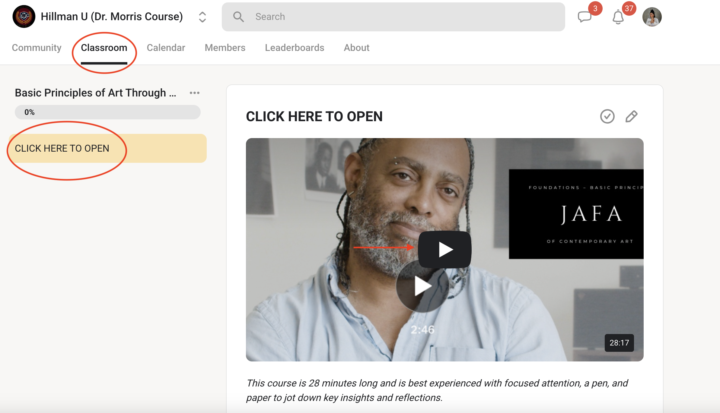
2 likes • Jan 30
Exploring Jafa's work evoked deep emotion and reflection. His approach to storytelling through art resonates with my practice as a writer centering on the Black experience. His installations guide viewers through intentional movements, drawing attention to focal points that emphasize powerful narratives. Jafa's statement about not just loving Black people but being interested in them affirmed the importance of representation across artistic mediums and inspired me to think more critically about my creative expression. His piece "Mickey Mouse Was a Scorpio" was especially powerful. The imagery and feelings it evokes, whether rooted in personal experiences or shaped by public perception, can hold different meanings for teacher viewers, making it both thought-provoking and deeply impactful. Thank you for taking the time to facilitate this course. I'm looking forward to the rest of the semester and the opportunity to learn more.
📌 Welcome! Introduce yourself + share a pic of your favorite artist
Share a picture of your favorite artist or learning workspace below! Welcome to "Contemporary Black Art: Voices, Visions, and Movements in America!" I'm Dr. Morris, and I'm excited to guide you through this transformative exploration of contemporary Black art. I'm an artist, educator, and scholar specializing in global Black perspectives and social sculpture and historical frameworks in contemporary art. Throughout my career, I've witnessed firsthand how art can challenge perspectives, spark dialogue, and create lasting change. I've taught classes at Contemporary Arts Museum Houston, and led a team of 10 educators. What to Expect: - Deep dives into works by groundbreaking artists like Nick Cave, Kara Walker, and Kehinde Wiley - Rich discussions about identity, activism, and innovation in Black art - A supportive community of learners passionate about art and social change - Interactive sessions with real-world examples and case studies 🗓️ Course Structure: - Weekly Classes (Tuesdays & Thursdays at 7 PM CST) - Engaging discussions in our community space - Virtual gallery visits and artist spotlights - Collaborative projects and peer feedback 💫 Why This Matters: Contemporary Black art isn't just about aesthetics – it's a powerful lens through which we examine history, challenge present narratives, and imagine new futures. Whether you're an artist, educator, or art enthusiast, this course will deepen your understanding of this vital cultural force. Community Guidelines: - Approach discussions with curiosity and respect - Share your unique perspectives - Engage meaningfully with peers - Ask questions freely Ready to begin? Introduce yourself below and share what drew you to this course!
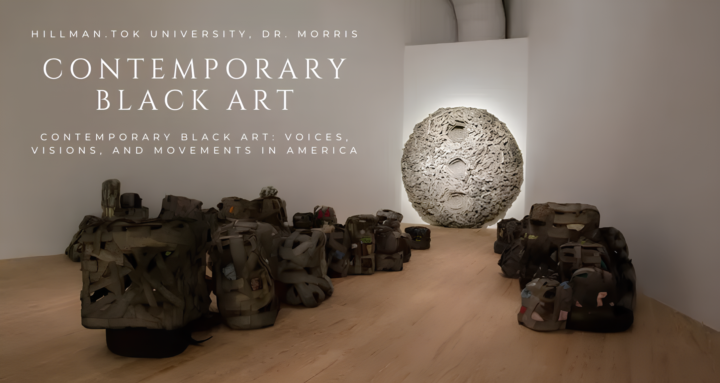
2 likes • Jan 30
Hi, I'm Candi from CT. I don't have a favorite artist as I have focused more on Black Art from the perspective of literature and music. I am excited to learn more about a new genre and how it is used as a form of expression. An artist that I was recently introduced to is Taha Clayton, and a piece that has resonated with me is Solider of Love
1-3 of 3
